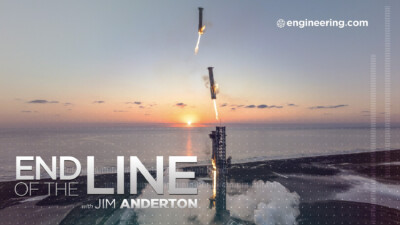iSpace successfully tests a reusable booster.
Numerous government-supported and private launch providers are in the market today, and from a cost perspective, the current leader is SpaceX. Reusability of their Falcon program boosters—combined with a captive market through Elon Musk’s other company, Starlink—gives SpaceX lower operating costs and a guaranteed launch cadence to amortize fixed costs over time. Reusability is the key, and other launch providers intend to do the same.
On November 2nd, China’s iSpace launched and landed their Hyperbola-2 test stage in a successful hop that demonstrated the company’s throttleable engine technology and precision landing capability. Current efforts are focused on the much larger Hyperbola-3, which will be developed in both expendable and recoverable versions. The Hyperbola-3 is designed to lift 8 ½ tons into low Earth orbit in recoverable form, and as much as 13 tons when expended. The rocket will use liquid engines, powered by liquid oxygen and methane.
Access all episodes of This Week in Engineering on engineering.com TV along with all of our other series.
* * *
Episode Transcript:
Commercial space launch services have been around for more than 60 years now, but the high cost of launching payloads into low Earth orbit has meant that for much of that time, access to space has been limited to commercial operators with very high value payloads, mainly large communication satellites.
The environment is very different today, for two reasons: one is the development of constellations of lightweight, low Earth orbit communication satellites, and the other is competition.
Numerous government-supported and private launch providers are in the market today, and from a cost perspective, the current leader is SpaceX. Reusability of their Falcon program boosters—combined with a captive market through Elon Musk’s other company, Starlink—gives SpaceX lower operating costs and a guaranteed launch cadence to amortize fixed costs over time.
Reusability is the key, and other launch providers intend to do the same. On November 2nd, China’s iSpace launched and landed their Hyperbola-2 test stage in a successful hop that demonstrated the company’s throttleable engine technology and precision landing capability. In 2019, iSpace successfully launched a small payload into low Earth orbit using their Hyperbola-1 four stage solid fuel rocket, but current efforts are focused on the much larger Hyperbola-3, which will be developed in both expendable and recoverable versions.
The Hyperbola-3 is designed to lift 8 ½ tons into low Earth orbit in recoverable form, and as much as 13 tons when expended. The rocket will use liquid fuel engines, powered by oxygen and methane. The company’s methalox Focus-1 engine was successfully flight tested in the Hyperbola-2 test stage, and flight tests of the new, large rocket are expected in 2025, with a flight test of a recoverable system in 2026.
iSpace is one of many private Chinese space launch ventures, which include Landspace, Deep Blue Aerospace, Galactic Energy and CAS Space, each with proprietary airframes and engines.
From a global market perspective, satellite operators have many choices, especially if their payloads are light. It’s unknown if the commercial satellite market can support all the launch service providers currently in the market. According to Polaris Market Research, the current global launch services market in 2023 is a $15.3 billion business, which will grow at a little over 12 percent a year on average through 2032, rising to just under $50 billion.
There are currently some 30 privately owned launch service providers, as well as government space agencies in the United States, China, Russia, India, Iran and Korea. It’s a highly competitive market, and the iSpace Hyperbola-2 test suggests that market pricing pressures will make reusability the technology for survivability in an increasingly competitive launch market.



